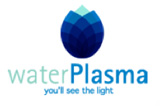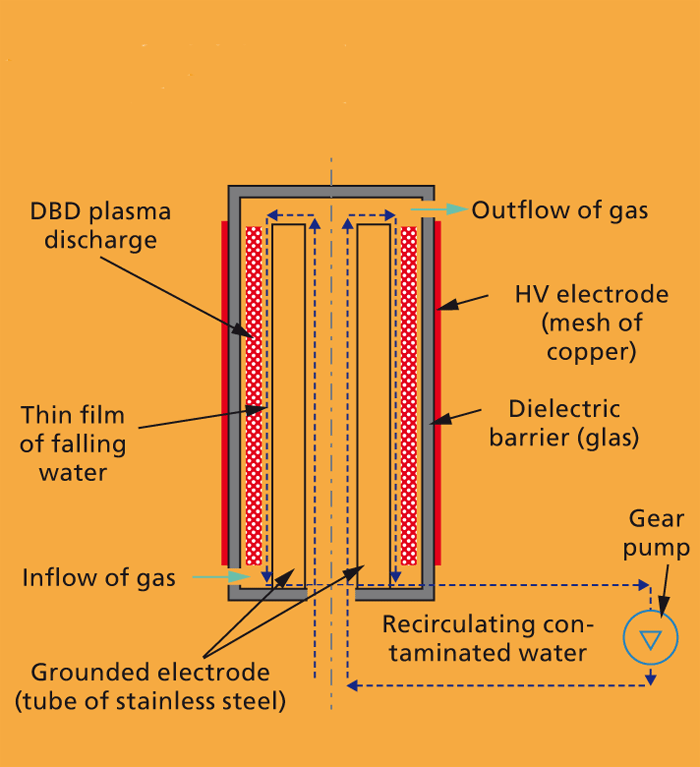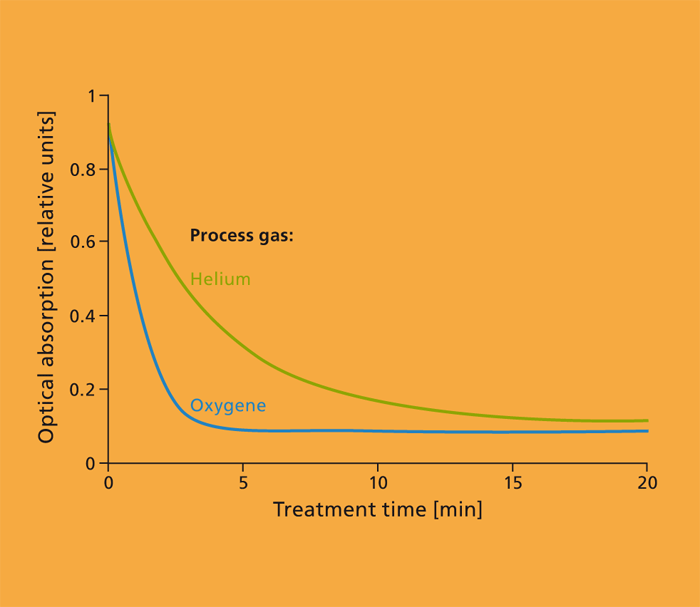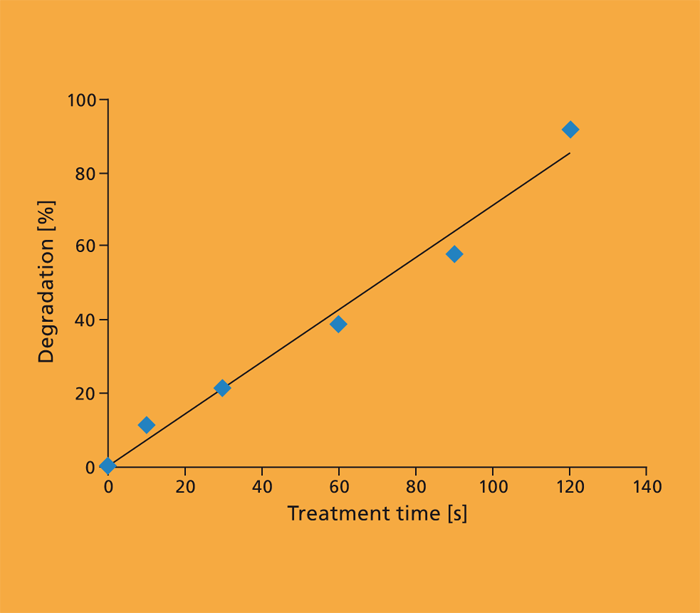The use of atmospheric pressure plasma processes could provide an environmentally compatible and cost-effective alternative. Ions, highly reactive radicals and short-wave radiation, that degrade the contents of the wastewater are formed simply by applying a high voltage, which is igniting a plasma discharge in ambient air or oxygen. This renders the use of chemicals and their subsequent disposal unnecessary. The aim of the EU-funded “WaterPlasma” project was therefore to develop a plasma process for purifying water and a suitable plasma reactor as a prototype.
New type of plasma reactor
The special design of the plasma reactor insures an effective transmission rate of the highly reactive species formed in the plasma to the contaminated water. This is achieved by forming the plasma in direct contact with a flowing water film. The water to be purified falls through the plasma zone by the force of gravity, directly onto the outer surface of a grounded electrode (stainless steel cylinder). Hydroxyl radicals, among others, are created in the plasma and transmitted to the water. By means of their high oxidation potential these radicals and short wavelength UV radiation break down the dissolved contaminants until they are mineralized.
Energy-efficient and effective degradation
A method for comparing the efficiency of advanced oxidation processes is the measurement of the energy input that is required to decolor methylene blue by one order of magnitude [1]. Using the plasma process 4 g/kWh is achieved. This value is nearly one order of magnitude better than the energy efficiency measured with a UV H2O2 treatment of methylene blue [2]. In another application of the water plasma method the project showed that cyanide is broken down by 90 percent within 2 minutes [3].
Outlook
Unlike well-established advanced oxidation processes the plasma process for water decontamination has no barrier between the plasma and the medium that is to be purified. It therefore requires almost no maintenance and is characterized by a long life. A very high degree of efficiency is achieved even without the introduction of hazardous substances such as hydrogen peroxide or ozone. As a result of the project a demonstrator is now available that is suitable for purifying substantial quantities of contaminated water (240 L/h). At the moment further possible applications for the procedure are being examined.

 Fraunhofer Institute for Interfacial Engineering and Biotechnology IGB
Fraunhofer Institute for Interfacial Engineering and Biotechnology IGB


